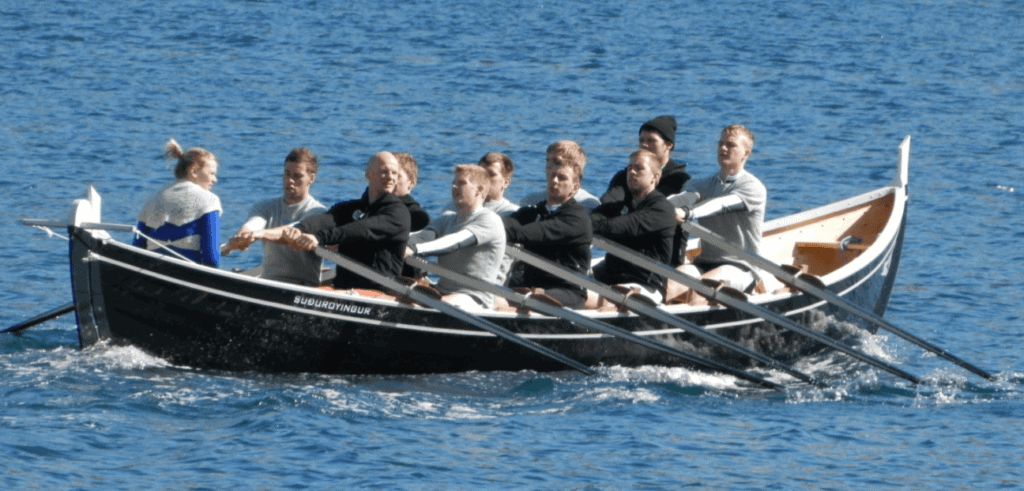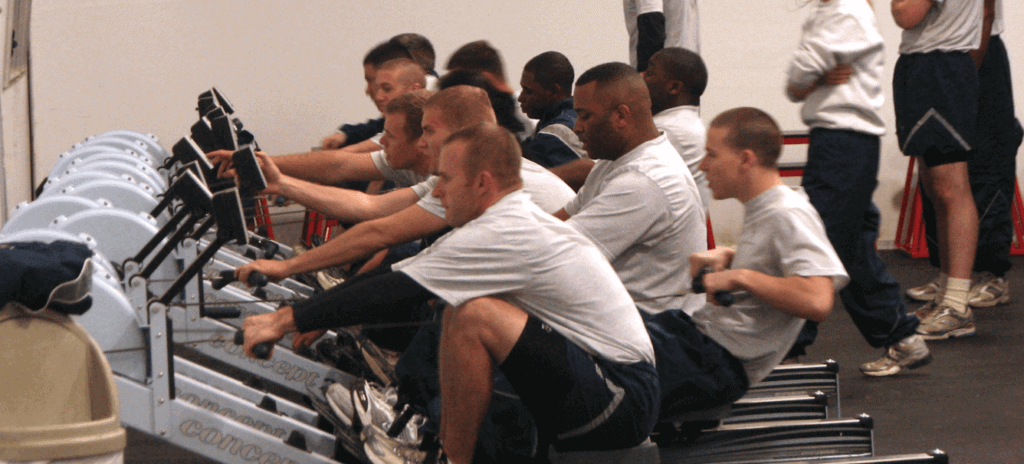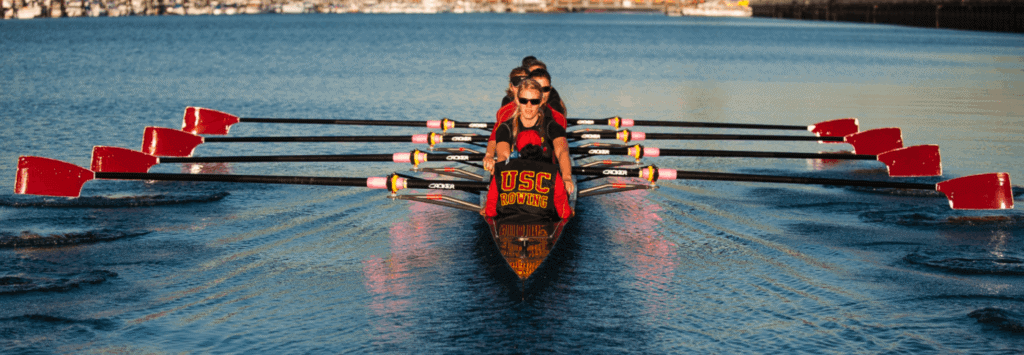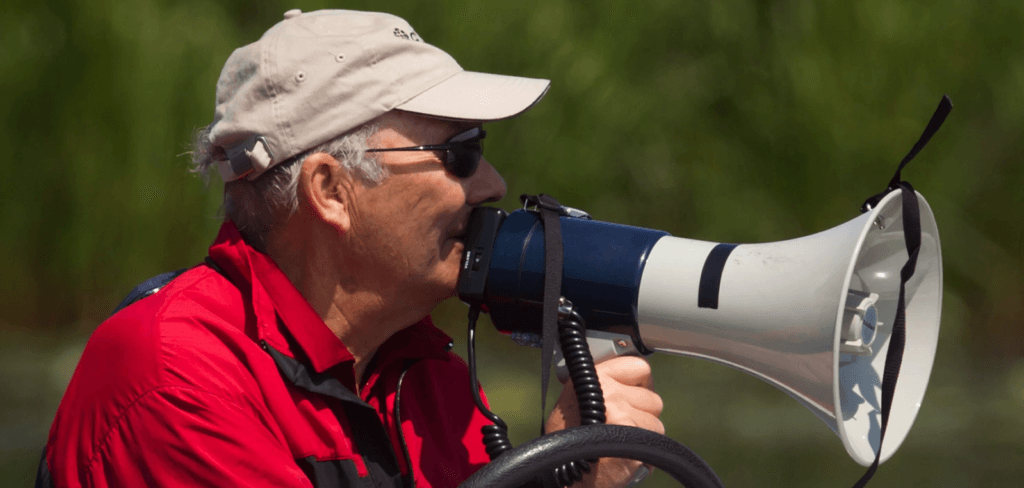Healthy Rowing | A Beginner’s Guide
In the United States, rowing may also be referred to as crew. The sport goes all the way back to Ancient Egyptian times. The basics of the sport include moving a boat through water using oars. It’s well known as a competitive sport and also as a recreational activity.
Many colleges and universities have crew clubs or teams that compete in different types of races. Rowing is also an Olympic sport and world championship events are held yearly. The Olympic Games include 14 total boat classes for racing with some for men and women. FISA holds the World Rowing Championships every year with 22 different boat classes.
Rowing Basics
Safety
Before you head out on the water to enjoy rowing, it’s important to start with safety instructions. Safety has to come first, or you could end up injured.
During the winter months, make sure that you are not going out alone in the cold weather. Falling in water below 50 degrees can send someone into shock very quickly which will make even a very strong swimmer have difficulty self-rescuing themselves back into their boat.
Some of the guidelines you want to make sure you follow before each row include:
Pass a Swim Test
If you cannot swim, you probably shouldn’t be on the water rowing. Many rowing clubs require you to pass a swim test before you begin rowing. This test may also include putting on a life jacket while you’re in the water.
Know Basic Terminology
If you don’t understand what bow, stern, starboard, weight enough, back, tie-in, stop, bow person and port mean, you’re not ready to row. These are basic words used during rowing, which you need to understand before getting into the water.
Know the Waters
It’s also important to understand the waters where you’re rowing. Make sure you know the traffic patterns, and are aware of any hazards.
Make Sure You’re in Shape
Before you start rowing for the first time, you may want to consult a physician. Rowing is a form of exercise, and a doctor should sign off before you start any new exercise program, especially if you have underlying health concerns.
Perform a Land Warm Up
Before entering the water, you need to get your body warmed up. Take three to five minutes to jog, jump rope, run in place or do jumping jacks to get warmed up. Then, take the time to perform some basic stretches before you even touch your boat. You could even use an indoor rowing machine to warm up before hitting the water.
Do a Water Warm Up
Along with the land warm up, you need to perform a water warm up. This provides even more protection from injury. Start by gradually building from no pressure rowing to full intensity rowing.
A Few More Safety Guidelines for Rowing
- It’s always a good idea to row with a buddy or at least have someone near the water aware that you will be rowing.
- In an emergency situation, it’s important to understand what to do, as well.
- If you are thrown overboard, swim down until the boat has passed.
- Yell, “Weigh ’nuff, hold water.”
- If you’re still in the boat and helping someone overboard, extend a flotation to the rower and pull the rower to the boat.
- Make sure, if you plan to row at night, you have a functioning bow and stern lights. The lights will ensure you can stay safe and other boats can see you. At night, you should always proceed with additional caution.
Rowing Safety Resources
FISA’s Minimum Guidelines for the Safe Practice of Rowing (PDF)
USRowing Safety Video (video)
Row Safe: A guide to rowing safely (video)
Health Benefits of Rowing
According to Telegraph, rowing has many health benefits, which is one of the main reasons rowing machines were created for indoor rowing. Many exercise programs are based around rowing. Not only does the movement provide physical benefits, but it’s also stress-relieving. It’s one of the most calming sports on the planet, especially in the morning. It can be done solo or with a team.
Whether you have access to the water and you plan to row solo, or you plan to use an indoor machine, some of the health benefits include:
Great Results from Low Impact Exercise
Other forms of exercise can be very hard on the joints, but rowing provides a low impact activity great for many large muscle groups. You’ll receive a full-body workout, which provides excellent weight-loss benefits without putting stress on your joints.
Excellent Cardio Workout
Rowing allows for a full cardio workout, which helps increase your lung capacity. It will also supports better blood circulation.
Promotes Weight Loss
According to RealBuzz, if you’re interested in losing weight, rowing is a great way to get rid of those extra pounds. Rowers burn twice as many calories completing a 2,000-meter course compared to runners completing a 3,000-meter steeplechase. However, running has a higher impact on the body and can cause more wear and tear.
Builds Muscle
According to FitDay, you use all of your large muscles and many of your smaller muscles in the action of rowing. (It’s important to start slow, warmup well and cool down to help beginners reduce muscle pain.)
Stress-Reducing Benefits
Rowing is very calming, especially early in the morning when the water is calm, and nobody is around.
Promotes a Healthier Body Composition
Maintaining a balanced body isn’t easy, but rowing helps. As you build muscle and burn calories, your body moves toward a healthy weight and your body composition changes.
Improves Mobility
The activity requires a full range of movements, which help to increase flexibility.
Additional Rowing Benefits Resources
On the Health Benefits of Rowing (video)
Rowing for All – Fit for Life!
How to Row
You may think rowing is easy and you just hop in the boat and start stroking the oar in the water. According to RowPerfect, However, there’s more to it than this. You need to stroke, but you need to do it correctly with the right posture and technique. Here’s a quick look at the elements of proper rowing technique.
- Posture – Make sure you sit tall in your seat with your head up and eyes forward. Good posture will allow you to maintain the proper rowing action.
- Full Range of Motion – It’s important to achieve the full range of motion with each stroke, which can be done by keeping good posture. Aim to reach as for forward as you possibly can with the handle while your legs are compressed as much as possible. This gives you the ability to push and get a full range of motion with each stroke.
- Rhythm – Even more important for teams, the rhythm will keep you moving quickly. The correct rowing ratio is 1:2, with twice as long spend recovering compared to driving the legs and stroking the oar.
- Lower Body Movement – Correct lower body movement will give you power as the leg muscles are the largest and strongest muscles in the body. Make sure the speed of your leg drive is between one-half second and one second.
- Upper Body Movement – The upper body helps the lower body and aids in the acceleration of the boat. Keeping the hands near to the body and the forearms horizontal will help. They should be at the height of the second bottom rib and the drive and recovery should be separate actions.
Along with making sure you get these elements of rowing correct, you want to avoid making some of the more common mistakes. Don’t row in the wrong order or shoot your seat. You also want to avoid bad posture and pulling with your torso too much.
Practice Makes Perfect
It’s the best way to get better at rowing, along with taking lessons from a professional. You can also use these tips to help gain better form and improve your rowing technique:
- Keep your grip moderate.
- Drive your legs with each stroke.
- Don’t pull with your arms.
- Sit up tall all of the time.
- Don’t let your shoulders shrug.
- Consistent and steady movement should be your focus.
If you practice these tips, you will create a better rowing motion and improve your ability.
Rowing Technique Resources
The 5 Rowing Mistakes You Don’t Know You’re Making
Beginner’s Guide to Rowing (video)
WaterRower – How to Row – Rowing Tutorial
Rowing Accessories
It’s important to make sure you have the correct gear before you try to take up rowing. Clothing is a part of the gear as it will make a difference in your range of motion and comfort on the water. Some of the things you need include:
Rowing Socks
Without a doubt, rowing requires feet, so you need to protect them from blisters, water log and pain. Rowing socks are made up of nylon, lycra and, in some cases, a moisture-wicking or cooling material. The cushion helps keep feet comfortable and the material helps prevent injury.
Rowing Shoes
Made with thick, rigid soles, rowing shoes protect your feet from cold in the winter and heat in the summer. The rigid sole isn’t just for protection, it also helps transfer power from the legs more efficiently.
Seat Pad
The entire time you’re rowing you’re sitting. Just like biking, sometimes the seat can be a bit hard on the bum. Seat pads provide cushion without impeding movement or infringing on other rower’s space.
Calf Protectors
The latter motion in rowing places the calves rather close to the boat. This can lead to friction and rubbing. Calf protectors are designed to protect against injury and they work better than a cut-off sock.
Overgrip Rolls/Sculling Grips
100% of oars used to be made with wood, but today, there are more advanced materials. But, that doesn’t mean your hands are any more protected from injuries caused by friction. Overgrip rolls are like tape that wraps around the end of the oar for grip, of course, and comfort. An alternative to overgrip rolls are sculling grips. Instead of wrapping around the oar, they slide on the end.
Loudspeaker
The measured, rhythmic motion of rowing isn’t as easy to maintain as you’d think. At the stern of the boat sits the coxswain or leader, if you will. Rowers don’t face the direction the boat is moving, so in addition to setting and maintaining a solid pace, the coxswain guides the rowers in steering. In order to ensure all rowers hear the instructions, a loudspeaker is needed.
What Users Are Saying
“First off make sure you have coaching when you are beginning. Even if you have the right body type and fitness, that won’t matter much if you don’t have the technique to take advantage of it. Make small changes to adjust the set of the boat. Focus on a few technical aspects on every row. For me, I find that focusing on clean catches, proper blade depth, applying power at the right time in the stroke, having a clean finish, and having a relaxed recovery are what I usually draw from to look for improvements. In addition to coaching, I like to have friends take videos of me rowing from outside of the boat so I can look at my form and see improvements that I can make. If you are looking for what proper sculling or sweeping form should look like you should look at videos of Olympic races and slow it down to 0.25x speed to get a good look at what you should be doing. Good luck!”
“What everybody forgot to mention when they told you that you have potential is that the learning curve is steep af. As long as you keep a good attitude and you have decent coaching, you’ll learn a lot each session. It takes time, but you’ll get there. As for flipping, it happens to everybody. Absolutely everybody who has rowed any significant amount of time in small boats (Double, pair, single) has flipped. It’s good to get it out of the way, because at least then you won’t be as fearful and you’ve learned what not to do.”
“Putting in 110% every practice. Eating right. Making your teammates better by example. And finally working out outside of practice (you could make it something fun.) I know it sounds easier said than done. It’s hard. And the situation you’re in is frustrating as hell (been there.) But this is what makes you an even better athlete and a leader. Make it clear by example that you’re the best in the boat and they should follow and listen to you. Your boatmates will get better.”
More Resources for Rowing Accessories and Clothing
Max Rigging – Rowing Equipment Simplified
Healthy Rowing | A Beginner’s Guide Questions & Answers
- Recent:
A beginner should start with short sessions of 10 to 15 minutes on a rowing machine and slowly increase their duration as they become more comfortable and experienced. It is important to listen to your body, take breaks when needed, and never overexert yourself. As your fitness level increases, it is generally recommended for beginners to aim for no more than 30 minutes at once.

Summer Banks has researched over 5000 weight-loss programs, pills, shakes and diet plans. Previously, she managed 15 supplement brands, worked with professionals in the weight loss industry and completed coursework in nutrition at Stanford University.





